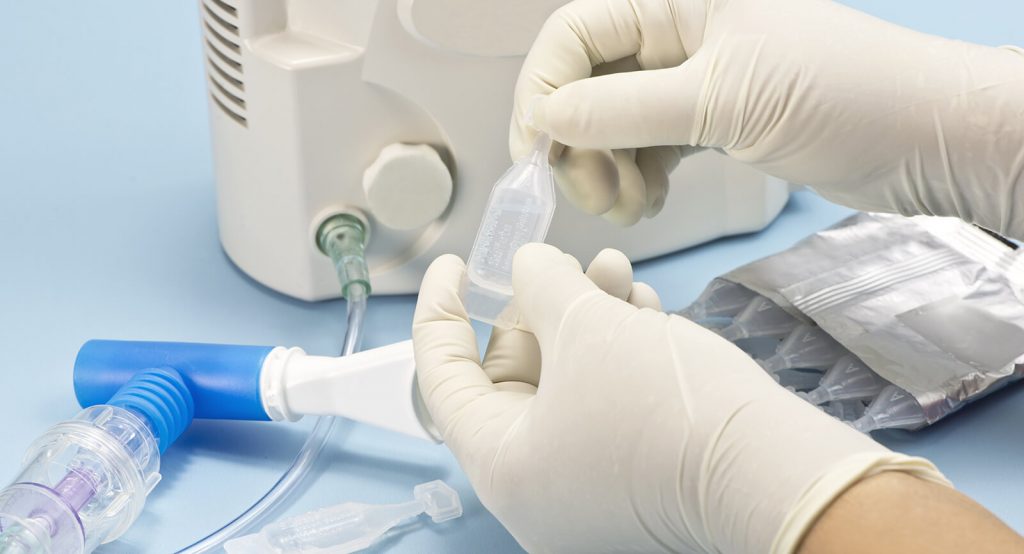Evidence Does Not Support Use of Albuterol in Bronchiolitis Patients

Although pediatricians have often used albuterol to manage bronchiolitis in infants and children, the 2014 Clinical Practice Guideline on Bronchiolitis released by the American Academy of Pediatrics strongly recommend against this use. The document includes direction on diagnosis and risk factor assessment, but states that once a diagnosis of bronchiolitis is made, clinicians should not administer albuterol. The recommendation is based on multiple meta-analyses and systematic reviews which collectively demonstrate that when it comes to length of stay, need for hospitalization, and recovery from bronchiolitis, there is no evidence that albuterol is efficacious despite occasionally providing temporary improvements in clinical scores.11. Ralston, Shawn L et al. “Clinical Practice Guideline: The Diagnosis, Management, and Prevention of Bronchiolitis.” Pediatrics 2014;134:e1474–e1502. November 2014. http://pediatrics.aappublications.org/content/pediatrics
/early/2014/10/21/peds.2014-2742.full.pdfRead Full Text
/early/2014/10/21/peds.2014-2742.full.pdfRead Full Text
In an interview following the release of the guidelines, primary author, Dr. Shawn Ralston, addressed the recommendations from a risk-benefit perspective and stated that “babies get significant tachycardia, irritability, and all of the side effects from albuterol, when only a very small percentage might benefit.”22. Quinonez, Ricardo A. and Shawn L. Ralston. “Bronchiolitis: The Rationale Behind the New AAP Guideline.” Medscape. November 13, 2014. https://www.medscape.com/viewarticle/834677_2Read Full Text
These recommendations mark a change from the 2006 guidelines which stated that bronchodilators, like albuterol, should not be used routinely and when used should be carefully monitored and only continued if there is an objectively measurable benefit to the patient.33. Clinical Practice Guideline: Diagnosis and Management of Bronchiolitis. Pediatrics Volume 118, Number 4, October 2006. 1778-1779. http://pediatrics.aappublications.org/content/
pediatrics/118/4/1774.full.pdfRead Full Text Due to the long-standing clinical use of albuterol, the new guidelines have caused much discussion on management of bronchiolitis patients, especially among clinicians in the emergency department for the management of the undifferentiated, wheezing child.44. Levine, Amy and April Edwards. “Do the AAP’s New Bronchiolitis Guidelines Throw the Baby Out With the Bathwater?” Emergency Physicians Monthly. Jan 30, 2015. http://epmonthly.com/article/do-the-aap-s-new-bronchiolitis-guidelines-throw-the-baby-out-with-the-bathwater/Read Full Text
pediatrics/118/4/1774.full.pdfRead Full Text Due to the long-standing clinical use of albuterol, the new guidelines have caused much discussion on management of bronchiolitis patients, especially among clinicians in the emergency department for the management of the undifferentiated, wheezing child.44. Levine, Amy and April Edwards. “Do the AAP’s New Bronchiolitis Guidelines Throw the Baby Out With the Bathwater?” Emergency Physicians Monthly. Jan 30, 2015. http://epmonthly.com/article/do-the-aap-s-new-bronchiolitis-guidelines-throw-the-baby-out-with-the-bathwater/Read Full Text
The Seattle Children’s Bronchiolitis Pathway is an example of a potential pathway in light of the updated guidelines. It outlines ED Management, Inpatient Management, as well as High Flow Nasal Cannula (HFNC) Management.
References